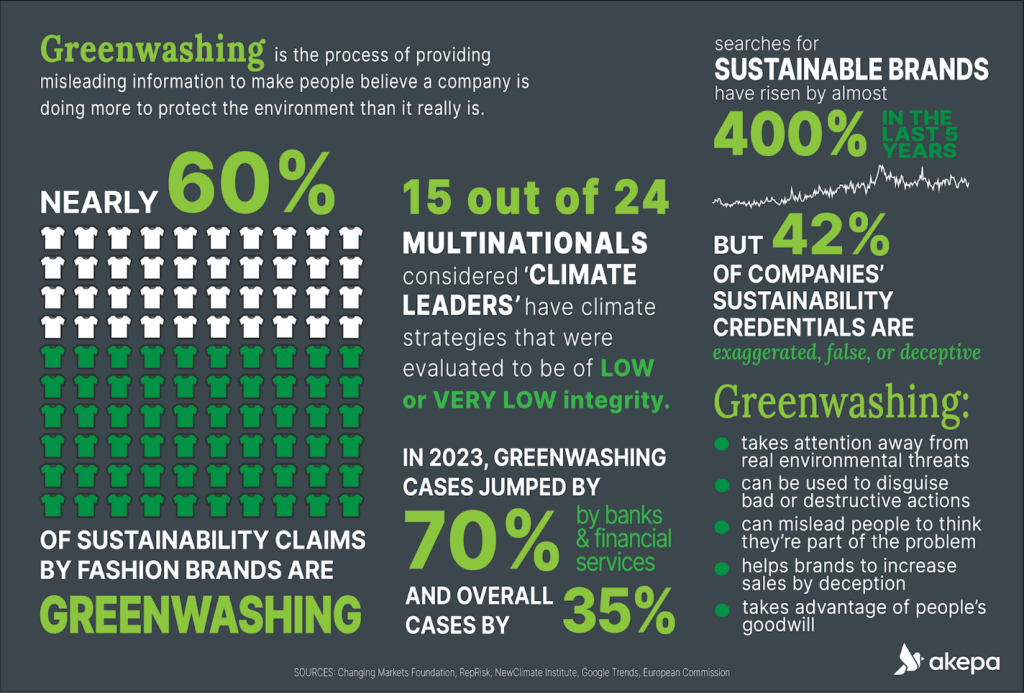The concept of carbon offsetting has gained significant traction as a tool to combat climate change, with many companies and organizations investing in projects that capture or reduce carbon emissions. However, questions arise when these initiatives involve collecting carbon from lands already under protection. Critics argue that such practices may amount to greenwashing, where efforts are more about public relations than genuine environmental impact. This article explores whether leveraging protected areas for carbon credits undermines conservation goals or if it can coexist with meaningful climate action. By examining the ethical and ecological implications, we aim to shed light on this increasingly debated issue.

- Is Collecting Carbon From an Already Protected Land GREENWASHING?
- What is Greenwashing in the Context of Carbon Collection?
- Why Are Protected Lands Targeted for Carbon Collection?
- How Does Carbon Collection from Protected Lands Impact Biodiversity?
- What Are the Ethical Concerns Surrounding This Practice?
- Are There Alternatives to Collecting Carbon from Protected Lands?
- Is carbon offsetting just greenwashing?
- Can I sell carbon credits from my land?
- What is greenwashing the carbon footprint?
- Is carbon capture environmentally friendly?
- Frequently Asked Questions (FAQ)
- What is greenwashing in the context of carbon collection from protected lands?
- Why is collecting carbon from protected lands considered controversial?
- How does carbon collection from protected lands affect climate change mitigation?
- What are the alternatives to carbon collection from protected lands?
Is Collecting Carbon From an Already Protected Land GREENWASHING?
What is Greenwashing in the Context of Carbon Collection?
Greenwashing refers to the practice of making misleading claims about the environmental benefits of a product, service, or practice to appear more eco-friendly than it actually is. In the context of carbon collection, greenwashing might occur when companies claim to offset their carbon emissions by collecting carbon from lands that are already protected. This raises questions about the authenticity and additionality of such efforts, as these lands would naturally sequester carbon without any intervention.
Why Are Protected Lands Targeted for Carbon Collection?
Protected lands are often rich in biodiversity and have high carbon sequestration potential. Companies may target these areas because they offer a cost-effective way to claim carbon credits without making significant changes to their operations. However, this practice can be controversial because it may not result in additional carbon sequestration, as these lands are already managed to preserve their natural state.
See Also Carbon Emissions Trading Analysis
Carbon Emissions Trading AnalysisHow Does Carbon Collection from Protected Lands Impact Biodiversity?
While carbon collection from protected lands might seem beneficial, it can have unintended consequences on biodiversity. Activities such as tree planting or forest management for carbon credits can disrupt existing ecosystems, potentially harming native species and altering habitats. It is crucial to assess whether these activities provide a net benefit to the environment or if they merely serve as a marketing tool.
What Are the Ethical Concerns Surrounding This Practice?
The ethical concerns revolve around the transparency and integrity of carbon offset projects. Collecting carbon from already protected lands may mislead consumers and stakeholders into believing that a company is making a genuine effort to reduce its environmental impact. This can undermine trust in carbon offset programs and divert attention from more impactful sustainability initiatives.
Are There Alternatives to Collecting Carbon from Protected Lands?
Yes, there are several alternatives that can provide real and additional carbon sequestration benefits. These include investing in reforestation of degraded lands, supporting renewable energy projects, and implementing energy efficiency measures. These alternatives often require more effort and resources but can lead to meaningful environmental improvements.
See Also Carbon Credit NFTs: An Increasingly Popular Real-World Use Case That You Should Know About!
Carbon Credit NFTs: An Increasingly Popular Real-World Use Case That You Should Know About!| Key Term | Definition |
|---|---|
| Greenwashing | Misleading claims about environmental benefits to appear eco-friendly. |
| Additionality | The principle that carbon offset projects should result in additional carbon sequestration. |
| Biodiversity | The variety of life in a particular habitat or ecosystem. |
| Transparency | Openness and clarity in reporting environmental practices. |
| Net Benefit | The overall positive impact of an activity after considering all effects. |
Is carbon offsetting just greenwashing?

What is Carbon Offsetting?
Carbon offsetting is a process where individuals or companies compensate for their carbon emissions by investing in environmental projects that reduce or capture an equivalent amount of greenhouse gases. These projects can include reforestation, renewable energy initiatives, or methane capture programs. The idea is to balance out the emissions produced by funding activities that benefit the environment.
- Reforestation: Planting trees to absorb CO2 from the atmosphere.
- Renewable Energy: Supporting wind, solar, or hydroelectric projects to replace fossil fuels.
- Methane Capture: Reducing emissions from landfills or agricultural activities.
How Does Carbon Offsetting Work?
Carbon offsetting works by calculating the amount of carbon emissions produced by an activity, such as flying or manufacturing, and then purchasing carbon credits equivalent to that amount. These credits fund projects that either reduce emissions or remove carbon from the atmosphere. However, the effectiveness of these projects can vary widely depending on their implementation and verification.
See Also How Can I Make Money With Carbon Credits?
How Can I Make Money With Carbon Credits?- Carbon Credits: Each credit represents one ton of CO2 reduced or removed.
- Verification: Projects must be certified by recognized standards like the Gold Standard or Verified Carbon Standard.
- Additionality: Projects should demonstrate that they wouldn’t have happened without offset funding.
Is Carbon Offsetting Effective?
The effectiveness of carbon offsetting is debated. While it can contribute to emission reductions, critics argue that it often serves as a band-aid solution rather than addressing the root cause of emissions. Some projects fail to deliver the promised benefits, and others may even harm local communities or ecosystems.
- Uncertain Outcomes: Not all projects achieve their stated goals.
- Double Counting: Emissions reductions may be claimed by multiple parties.
- Social Impact: Some projects displace local communities or harm biodiversity.
What is Greenwashing?
Greenwashing refers to the practice of making misleading or unsubstantiated claims about the environmental benefits of a product, service, or practice. In the context of carbon offsetting, it occurs when companies use offsets to appear environmentally friendly without making meaningful efforts to reduce their own emissions.
- Misleading Claims: Overstating the impact of offset projects.
- Lack of Transparency: Failing to provide clear information about offset projects.
- Overreliance on Offsets: Using offsets as a substitute for actual emission reductions.
Is Carbon Offsetting Just Greenwashing?
Whether carbon offsetting is just greenwashing depends on how it is implemented. If used as part of a broader strategy to reduce emissions and transition to sustainable practices, it can be a valuable tool. However, if used as a standalone solution to justify continued high emissions, it risks being labeled as greenwashing.
- Complementary Measure: Offsets should supplement, not replace, emission reduction efforts.
- Credible Projects: Only support verified and high-quality offset projects.
- Corporate Responsibility: Companies must prioritize reducing their own emissions first.
Can I sell carbon credits from my land?

What Are Carbon Credits?
Carbon credits are a form of environmental commodity that represent the reduction, avoidance, or removal of one metric ton of carbon dioxide (CO2) or its equivalent in other greenhouse gases. These credits are traded in carbon markets, allowing businesses and individuals to offset their carbon emissions. If your land has the potential to reduce or capture carbon emissions, you may be eligible to generate and sell carbon credits.
- Carbon credits are tied to projects that reduce or capture greenhouse gases.
- They are verified by third-party organizations to ensure credibility.
- Landowners can participate in carbon markets by meeting specific criteria.
How Can My Land Qualify for Carbon Credits?
To qualify for carbon credits, your land must support activities that either reduce emissions or enhance carbon sequestration. Common qualifying activities include reforestation, afforestation, sustainable agriculture, and conservation practices. The land must meet specific standards set by carbon certification programs, such as the Verified Carbon Standard (VCS) or the Climate Action Reserve (CAR).
- Your land must support activities that reduce emissions or capture carbon.
- It must comply with certification standards like VCS or CAR.
- You may need to work with a project developer to assess eligibility.
What Types of Land Are Eligible?
Eligible land types for carbon credits include forests, agricultural lands, wetlands, and grasslands. Forests are the most common, as they naturally sequester carbon through tree growth. Agricultural lands can qualify through practices like no-till farming or cover cropping, while wetlands and grasslands are valued for their ability to store carbon in soil and vegetation.
- Forests are highly valued for carbon sequestration.
- Agricultural lands can qualify through sustainable practices.
- Wetlands and grasslands also store significant carbon.
How Are Carbon Credits Generated?
Carbon credits are generated through carbon offset projects that follow a rigorous process. First, the project must be designed and validated by a recognized standard. Then, the carbon reductions or removals are monitored and verified by an independent third party. Once verified, the credits are issued and can be sold in carbon markets.
- Projects must be designed and validated by recognized standards.
- Independent third parties verify the carbon reductions or removals.
- Verified credits are issued and can be sold in markets.
How Can I Sell Carbon Credits from My Land?
To sell carbon credits, you typically need to partner with a carbon project developer or join a carbon offset program. These entities help you navigate the certification process, monitor your land's carbon sequestration, and connect you with buyers. Credits can be sold through voluntary markets or compliance markets, depending on the type of project and buyer demand.
- Partner with a carbon project developer or join a program.
- Certification and monitoring are handled by the developer.
- Credits can be sold in voluntary or compliance markets.
What is greenwashing the carbon footprint?
:max_bytes(150000):strip_icc()/Greenwashing-b844e5ddd59f4d86a18a9fd48c5a7447.jpg)
What is Greenwashing in the Context of Carbon Footprint?
Greenwashing refers to the practice of companies or organizations misleading consumers about the environmental benefits of their products, services, or practices, particularly in relation to their carbon footprint. This often involves exaggerating or falsely claiming that their operations are environmentally friendly or carbon-neutral, when in reality, they may still contribute significantly to greenhouse gas emissions.
- Misleading Claims: Companies may use vague terms like eco-friendly or green without providing concrete evidence or certifications.
- Selective Disclosure: Highlighting minor environmentally positive actions while ignoring larger, more harmful practices.
- Lack of Transparency: Failing to disclose the full extent of their carbon emissions or environmental impact.
How Does Greenwashing Affect Carbon Footprint Reporting?
Greenwashing can severely distort the perception of a company's actual carbon footprint. By presenting a misleading image of sustainability, companies may avoid taking meaningful steps to reduce their emissions, ultimately hindering global efforts to combat climate change.
- False Carbon Neutrality: Claiming to be carbon-neutral without verified offsets or reductions.
- Overstating Reductions: Exaggerating the impact of small-scale initiatives while ignoring larger emissions sources.
- Consumer Deception: Misleading consumers into believing they are making environmentally responsible choices.
Common Tactics Used in Greenwashing Carbon Footprint
Companies often employ specific tactics to greenwash their carbon footprint, making it difficult for consumers to discern the truth. These tactics can range from misleading labels to strategic marketing campaigns.
- Green Labels: Using unverified or self-created eco-labels to imply sustainability.
- Carbon Offsetting Claims: Relying on questionable carbon offset programs without reducing actual emissions.
- Cherry-Picking Data: Highlighting only favorable data points while omitting negative ones.
The Role of Regulations in Combating Greenwashing
Regulations and standards play a crucial role in addressing greenwashing related to carbon footprint. Governments and international organizations are increasingly implementing measures to ensure transparency and accountability.
- Mandatory Disclosures: Requiring companies to report their carbon emissions and reduction efforts accurately.
- Third-Party Verification: Encouraging or mandating independent verification of environmental claims.
- Penalties for Misrepresentation: Imposing fines or sanctions for companies found guilty of greenwashing.
How Can Consumers Identify Greenwashing in Carbon Footprint Claims?
Consumers can take steps to identify and avoid falling victim to greenwashing when evaluating a company's carbon footprint claims. Being informed and critical is key to making environmentally responsible choices.
- Research Certifications: Look for recognized certifications like CarbonNeutral or Climate Neutral.
- Check for Transparency: Ensure the company provides detailed and accessible information about its emissions and reduction strategies.
- Compare Claims: Cross-check the company's claims with independent reports or third-party assessments.
Is carbon capture environmentally friendly?

What is Carbon Capture and How Does It Work?
Carbon capture is a technology designed to reduce carbon dioxide (CO2) emissions from industrial processes and power generation. It involves three main steps:
- Capture: CO2 is separated from other gases produced during combustion or industrial processes.
- Transport: The captured CO2 is compressed and transported, usually via pipelines, to a storage site.
- Storage: The CO2 is injected deep underground into geological formations, where it is stored permanently.
Does Carbon Capture Reduce Greenhouse Gas Emissions?
Carbon capture has the potential to significantly reduce greenhouse gas emissions, particularly from industries that are hard to decarbonize, such as cement and steel production. However, its effectiveness depends on several factors:
- Efficiency: The technology must capture a high percentage of CO2 emissions to be impactful.
- Energy Use: The process requires energy, which can offset some of the emission reductions if not sourced renewably.
- Scale: Widespread adoption is necessary to make a meaningful difference in global emissions.
What Are the Environmental Risks of Carbon Capture?
While carbon capture can help mitigate climate change, it is not without environmental risks. Some of the key concerns include:
- Leakage: Stored CO2 could potentially leak back into the atmosphere, negating the benefits.
- Ecosystem Impact: The injection of CO2 underground may affect local ecosystems and water sources.
- Resource Use: The technology requires significant resources, including water and land, which could have environmental trade-offs.
Is Carbon Capture a Sustainable Solution?
Carbon capture is often seen as a bridge technology to a more sustainable future, but its sustainability depends on how it is implemented:
- Renewable Energy Integration: Pairing carbon capture with renewable energy sources can enhance its sustainability.
- Long-Term Storage: Ensuring that CO2 is stored securely for thousands of years is crucial for its long-term viability.
- Economic Viability: The cost of carbon capture must decrease to make it a feasible option for widespread use.
How Does Carbon Capture Compare to Other Climate Solutions?
Carbon capture is one of many tools available to combat climate change, but it has unique advantages and limitations compared to other solutions:
- Complementary Role: It can complement renewable energy by addressing emissions from sectors that are difficult to electrify.
- Cost: It is often more expensive than other mitigation strategies, such as energy efficiency or reforestation.
- Scalability: While promising, it is not yet deployed at the scale needed to make a significant global impact.
Frequently Asked Questions (FAQ)
What is greenwashing in the context of carbon collection from protected lands?
Greenwashing refers to the practice of making misleading claims about the environmental benefits of a project or activity to appear more eco-friendly than it actually is. In the context of carbon collection from protected lands, this could involve companies or organizations claiming that their efforts to capture or store carbon on already protected areas are significantly contributing to environmental conservation. However, if these lands were already safeguarded and not at risk of deforestation or degradation, the additional carbon collection efforts might not provide any real environmental benefit, thus constituting greenwashing.
Why is collecting carbon from protected lands considered controversial?
Collecting carbon from protected lands is controversial because these areas are already legally or institutionally safeguarded from activities that would release carbon, such as deforestation or industrial development. By claiming carbon credits or environmental benefits from these lands, companies might be double-counting the conservation efforts or misleading stakeholders about the actual impact of their actions. This practice can divert attention and resources from more pressing environmental issues, such as protecting unprotected or at-risk ecosystems that genuinely need conservation efforts.
How does carbon collection from protected lands affect climate change mitigation?
While carbon collection from protected lands might seem like a positive step toward mitigating climate change, its actual impact is often minimal. Since these lands are already protected, their carbon storage capacity is not under threat, meaning that any carbon credits generated from them do not represent a real reduction in emissions. This can create a false sense of progress in climate action, potentially delaying more effective measures like reducing emissions at their source or protecting vulnerable ecosystems that are actively being degraded.
What are the alternatives to carbon collection from protected lands?
Instead of focusing on carbon collection from already protected lands, efforts should be directed toward protecting and restoring degraded or at-risk ecosystems. This includes reforestation, afforestation, and sustainable land management practices in areas that are not currently protected. Additionally, investing in renewable energy, improving energy efficiency, and reducing fossil fuel consumption are more effective strategies for climate change mitigation. These alternatives ensure that resources are used to create genuine environmental benefits rather than supporting practices that may amount to greenwashing.
Leave a Reply


Our Recommended Articles